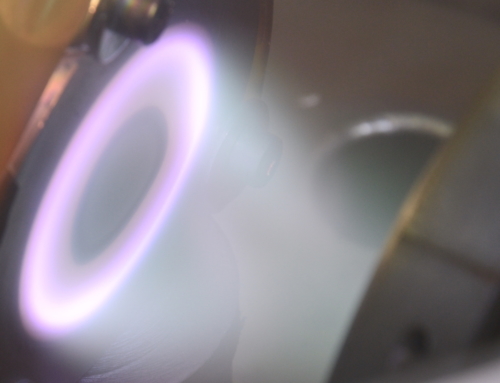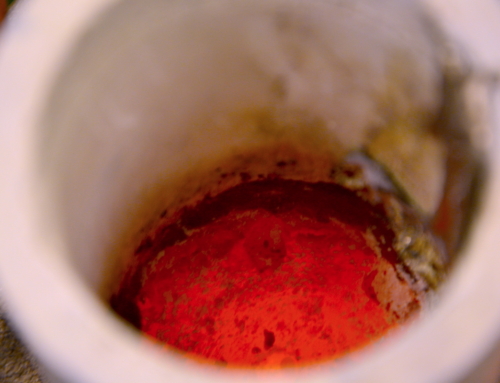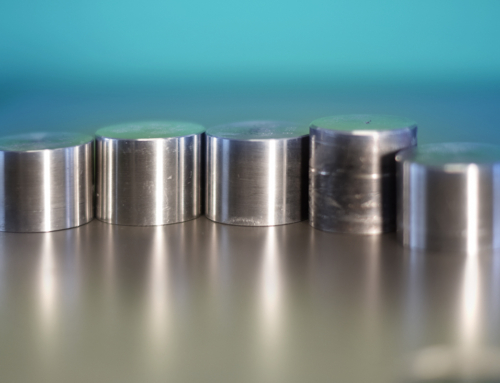Optical Emission Spectrometry or OES in short is a reliable analytical method used widely for defining the element composition of metals.
With the aid of OES it is possible to test the melt samples taken from primary and secondary metal production, and the samples – pipes, screws, bars, wires, sheets, etc. – of the metal processing sectors.
OES utilises from the electromagnetic spectrum the range that lasts from ultraviolet to the top of the visible light, that is the wavelength range of 130 nm-800 nm.
In the case of the solid metal samples, which contain a wide concentration range, the OES is able to analyse with a high accuracy, precision and with high sensitivity (with a low detection limit) a wide range of the elements starting with Lithium up to Uranium.
The elements and concentrations that the OES is able to define depend on the material examined and the type of the applied analyser.
How does optical emission spectroscopy work?
Each OES analyser of 3 main components. The first component is the electric source, the task of which is to excite the atoms located within the given metal sample, which will emit characteristic radiation after being excited. The radiations emitted at different wavelengths will create a spectral image, which is unique for each element. For this purpose a small part of the sample has to be heated up to several thousand degrees. The high frequency electric source flows within the spectrometer through an electrode. The electric potential difference between the sample and the electrode produces and electric discharge, which passes through the sample, warms it up and evaporates the material from its external surface and it excites its atoms, which subsequently emit the emission lines that are characteristic of the given element (spectral image).
Electric discharge may take place in two forms. One of them is an arc, which is similar to a lightning, and the other one is a spark. We use these operation modes depending on the element measured and the required accuracy.
The second component is the optical system. The emitted radiation passes through the spectrometer, where the spectrometer separates the incoming light according to their wavelengths based on a diffraction classification, and then a detector measures at each wavelength the intensity of the light. The magnitude of intensity is proportional to the concentration of the elements that are within the sample.
The third component is the computer system. This system processes the measured intensities and it transforms them into concentrations.
How may we create element-specific emission lines from a metal sample?
When the energy produced by electric discharge interacts with an atom, some of the electrons of the outside shell of the atom is elevated to a higher trajectory. The emitted electrons will be less tied, because they will be further away from the nucleus, and they will create an empty space, which will make the atom instable. In order to restore stability these electrons will return to their empty spaces. the energy difference between the two shells is emitted in the form of element-specific light or optical emission.
Each element emits a series of spectral lines that correspond to the difference between the different energy levels (shells). Each transition creates a defined optical emission line, which has a fixed wavelength or radiation energy.
Each of the elements (iron, manganese, chrome, nickel, vanadium, etc.) that are included in a typical metal sample emits many wavelengths, which leads to rich spectres. For example iron emits more than 8000 different wavelengths.
The characteristic light that is emitted by the atoms included in the sample are introduced into the optical system (where with the aid of the high-tech classification method it is divided into spectral wavelengths, which contains 3600 strips per millimetre).
The detectors process the spectrum, which represents the peaks of light intensities by their wavelength. This means that OES provides both qualitative and quantitative data about the measured sample.
The elements may be identified on the basis of the spectra, and their peak areas/intensities indicate their concentration in the given sample. Subsequently the analyser uses this information for calculating the composition of the sample, based on calibration made with a certified reference material.
Compared to other analytical methods, OES has a number of advantages: it is fast, and its use is relatively easy, it measures numerous elements and concentrations in materials of many types, including carbon, sulphur, phosphor, boron and nitrogen as well. It is extremely accurate when measuring elements of small concentration and its cost is relatively low compared to the other methods.





